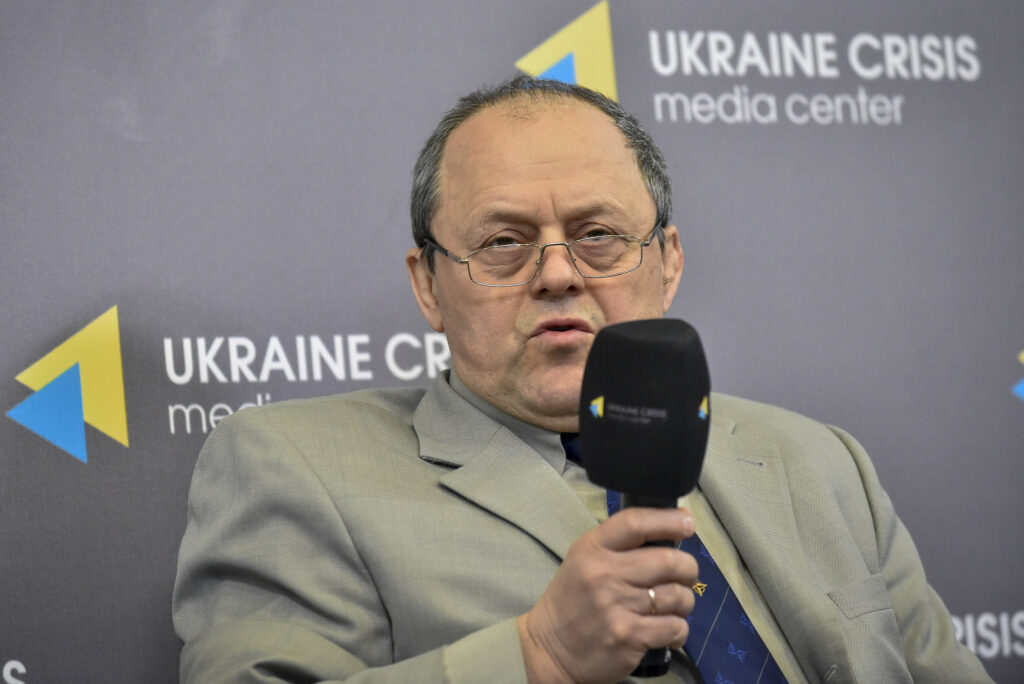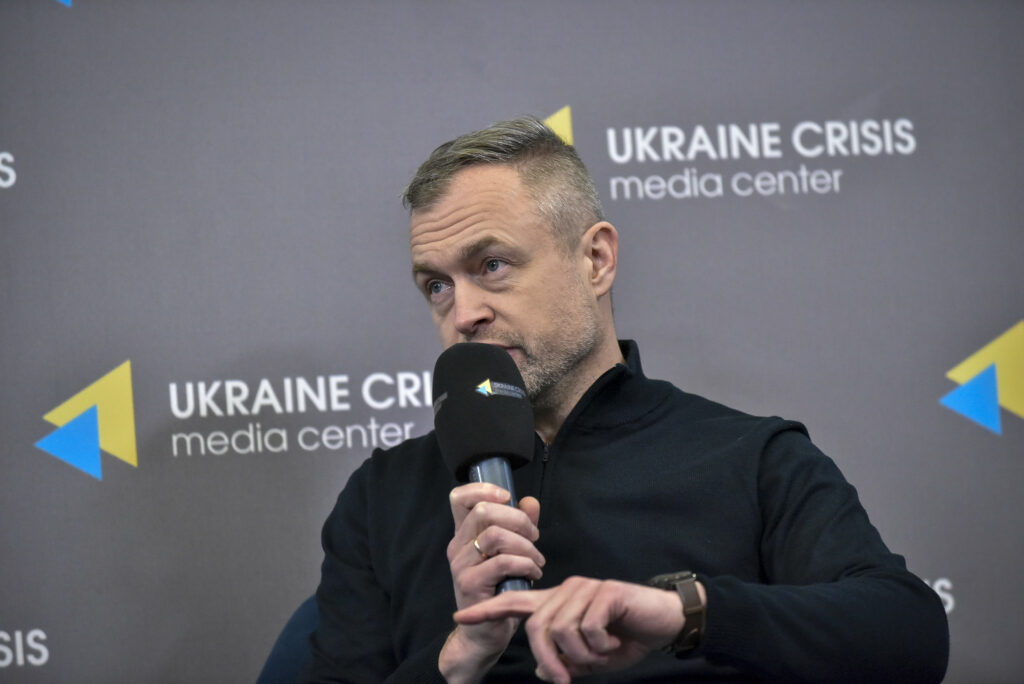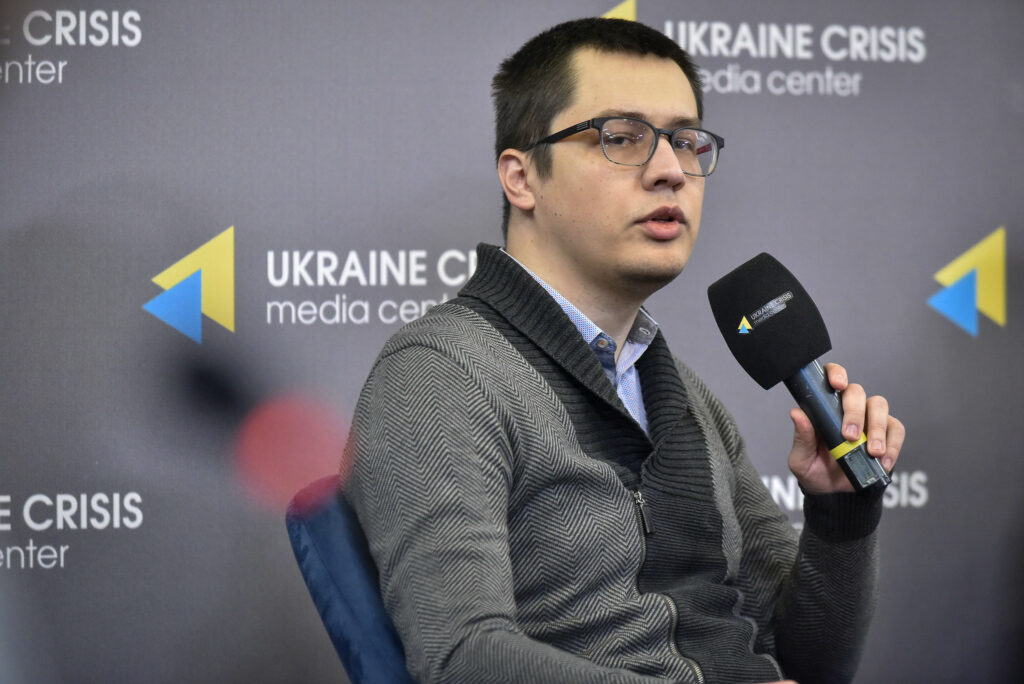On January 22, NATO’s largest exercise since 1988, Steadfast Defender 2024, began. Military Experts convened at the Ukraine Crisis Media Center to discuss how NATO can demonstrate the bloc’s readiness for acts of aggression by Moscow.
Volodymyr Solovian, Head of the Hybrid Warfare Analytical Group at Ukraine Crisis Media Center, discussed how Russian propagandists reacted to the exercises.
“An economic crisis is developing in Europe. Under these circumstances, it will be simpler to recruit contract soldiers and military-industrial complex workers.” “The transformation of NATO’s command groups has begun.” “The recent signing of separate defence agreements by the US with Finland, Sweden and Denmark provides the Americans with an additional foothold for military operations in the Baltic and Arctic zones.” “The Baltic Sea has turned into NATO’s ‘inland sea’, and “the Kaliningrad region and St Petersburg could be the areas taken under siege,” – some of the many narratives being spread by Russian propaganda, according to the Hybrid Warfare Analytical Group’s analysts.
According to Leonid Polyakov, a military expert and advisor to the director of the National Institute for Strategic Studies, Steadfast Defender 2024 is not about displaying force, but rather about coordinating to create the ability to withstand the large-scale Russian threat that is now being perceived as real.
“The same-named NATO exercises were held in 2021, but they involved far fewer forces and equipment. For comparison, only 7,000 people were involved. The exercises now cover all alliance countries, whereas they previously only covered three. This suggests that the Alliance has set February 2022 as a new baseline for improving its capabilities,” Leonid Polyakov stated.
Mykhailo Samus, Director of the New Geopolitics Research Network, recalled a 2017 visit to Poland during which he participated in a war game.
“Back then, in the context of the Russian-Belarusian exercise ‘The West’, the participants concluded that NATO was completely unprepared for the scenario that unfolded during the exercise. “The holding of Steadfast Defender 2024 demonstrates that the bloc has only recently begun to understand what it should have understood in 2008,” he said.
Regarding the likelihood of a Russian attack on NATO countries, the expert disagreed that the West has several years to prepare.
“They don’t have time to spare. And concrete steps demonstrate that they now realise this,” Samus stated. “There are indications that they are beginning to manufacture the same munitions not only for Ukraine but also with the intention of expanding their capabilities. It includes not only ammunition but also armored vehicles, aircraft, precision weapons, and other components. Russia sees such an attack as a hybrid component of the alliance’s collapse.
There is this kind of legend that if they [Russia] attack Estonia, even with small forces, or stage a provocation in the Suwalki corridor, NATO will just engage in lengthy discussions about whether to use Article 1 or not. This is where Orban, Fico, and possibly other alliance leaders come in, arguing that we should not provoke Russia right now because it could lead to a global armed conflict. Moscow believes that these deliberations could lead to NATO’s institutional collapse.”
Ivan Kyrychevskyi, a military expert at Defence Express, also urged caution when assessing the Alliance’s military and technical potential.
“For some reason, we believe that NATO excels at everything, including combat capabilities and air defense. Then we are genuinely surprised to see how a Kalibr can enter Romanian airspace. Without considering the capabilities of space reconnaissance and long-range strikes, NATO will be weaker than the Ukrainian defense forces mobilized, let alone the Russian Federation. We’re talking about the existing set of forces and capabilities,” the speaker explained.
Volodymyr Solovian concluded the discussion by stating that, unfortunately, Russia’s aggression has not provided enough motivation for Western political elites to mobilize all of their efforts to reorganize the military industry. Unlike politicians, NATO military commanders have a realistic assessment of the threats that Russia poses to the Alliance today.
“The American elections’ uncertainty can actually play into our hands. Europe sees the main threat as the absence of the umbrella of American protection, not from a Russian attack,” suggested the head of the Hybrid Warfare Analytical Group at Ukraine Crisis Media Centre.





